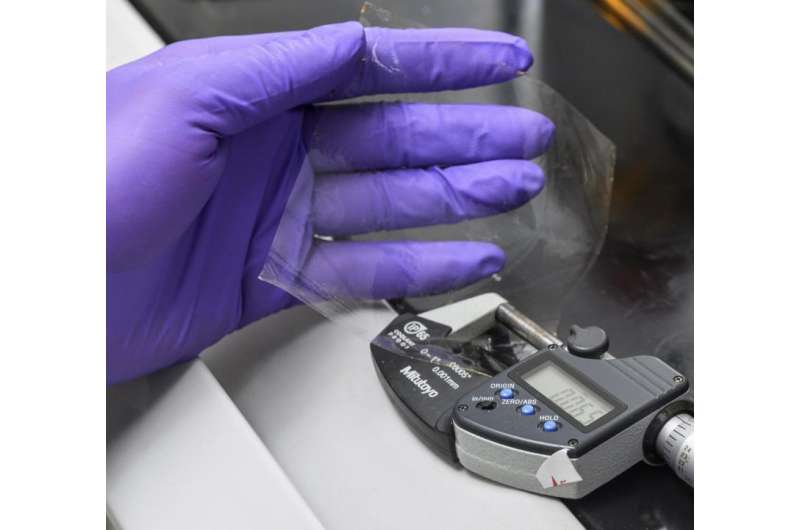Paper documents self-healing membrane for fuel cell applications

Fuel cells are energy efficient and clean. However, a major challenge to commercialization of this technology is the durability of a vital component of each cell, the membrane, which is typically made from a polymer called Nafion. During fuel cell operation, the membrane undergoes chemical and mechanical degradation, leading to cracks and pinholes that shorten its life.
To address this issue, three members of the University of Delaware's Department of Mechanical Engineering, Ajay Prasad, Liang Wang and Suresh Advani, have developed a self-healing membrane incorporating microcapsules prefilled with a Nafion solution. The work is reported in a paper published in the Journal of The Electrochemical Society. A patent application has also been filed.
"The microcapsules are designed to rupture when they encounter defects in the membrane and then release the prefilled Nafion solution to heal the defects in place," Wang explains.
Durability testing of the developed membrane has confirmed that the self-healing functionality could greatly extend its useful life.
"Membrane defects are impossible to detect and repair in an operating fuel cell," Advani says. "The only solution currently is to replace the entire membrane electrode assembly, which is prohibitively expensive."
"The possibility of employing self-healing polymeric materials that can heal cracks and pinholes in place is an exciting prospect for extending the working life and safety of such systems while also reducing the life-cycle cost," he adds.
The discovery is an important one in the continued development of hydrogen-powered polymer electrolyte membrane fuel cells, which according to Prasad, director of the Center for Fuel Cell Research at the University of Delaware, "have already demonstrated the potential to replace internal-combustion engines in vehicles and to provide power in stationary and portable applications.
More information: H. Fathi et al. Effects of Porosity and Water Saturation on the Effective Diffusivity of a Cathode Catalyst Layer, Journal of The Electrochemical Society (2017). DOI: 10.1149/2.0871704jes
Provided by University of Delaware





















